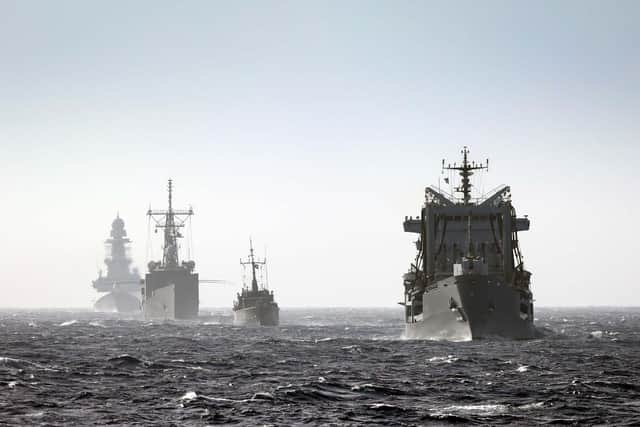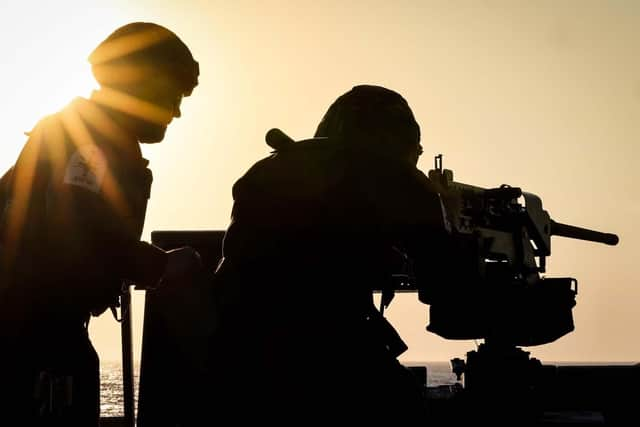Royal Navy: Portsmouth destroyer HMS Duncan leads task groups as they combine forces to eliminate minefield
and live on Freeview channel 276
The destroyers and frigates of Maritime Group 2, lead by HMS Duncan, teamed up with international minehunters of Mine Counter Measures Group 2. They tested themselves against a challenging scenario – traversing a simulated minefield.
Warships and merchant vessels alike are vulnerable to sea mines. The exercise involved spreading out dummy explosives across a simulated narrow chokepoint.
Advertisement
Hide AdAdvertisement
Hide Ad

This was then coupled with the risk of attack from hostile aircraft and fast attack craft, to make a formidable obstacle for passing ships and a realistic scenario which many vessels may face worldwide. Seven NATO warships from four countries proved their ability to overcome this complex challenge during the exercise.
The chokepoint – a narrow passage of water where freedom of manoeuvre is limited – funnels high volumes of traffic through a confined space. This makes vessels vulnerable to attack to land and sea-based opposition.
Nato ships are tasked to prepare for these sorts of scenarios to protect wealthy shipping lanes. Commodore Paul Stroude, Commander of Maritime Group 2, said: “Both the world economy and our daily existence are utterly reliant on merchant shipping. It is vital that we are able to keep these strategic routes open such that merchant vessels are able to pass through them safely.”


The minehunters and a command and support ship (Turkey’s Erdek and the Italian ships Stromboli and Viareggio) used their specialist equipment and expertise to clear a safe route through the minefield. Maritime Group 2 vessels, including frigates Gokceada (Turkey) and Carabiniere (Italy) – bolstered by USS Ramage – followed safely in their wake while providing protection from air and surface attack.
Advertisement
Hide AdAdvertisement
Hide AdAir and missile attacks were represented by computer simulation. These were defeated by a combination of long and short-range missile systems, such as HMS Duncan’s Sea Vipers, and her Phalanx Gatling guns.
Small boats from the task group were used to represent fast-attack craft, which were countered by close-range weapons such as 30mm or .50 calibre machine guns. Cdre Stroude said: “We have demonstrated that these two NATO task groups can operate seamlessly together to form a single, integrated, multinational force in the Mediterranean, capable of overcoming complex threats and real world challenges at short notice.”